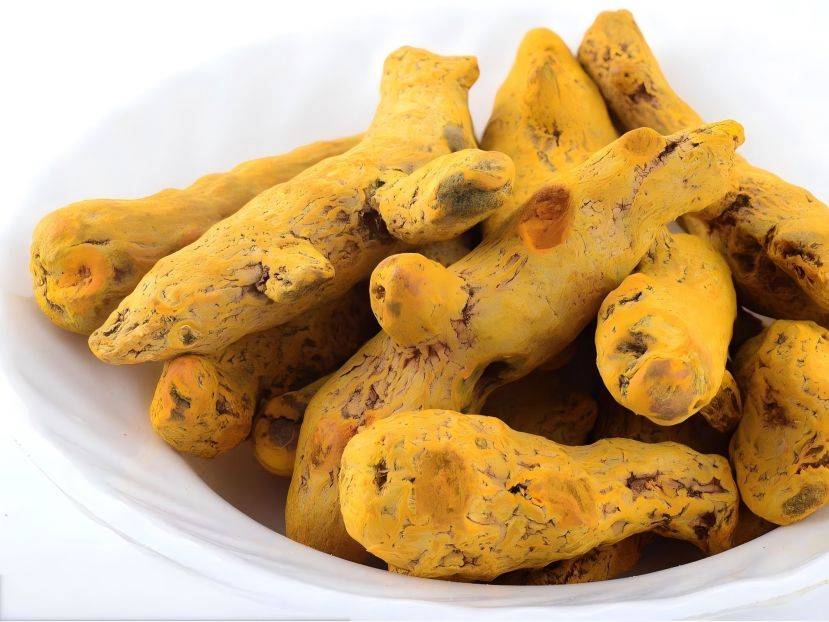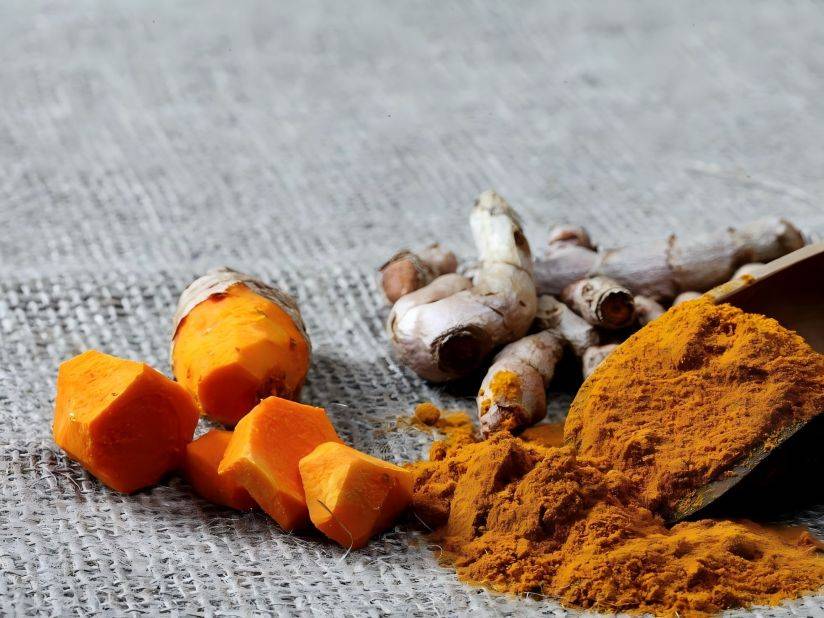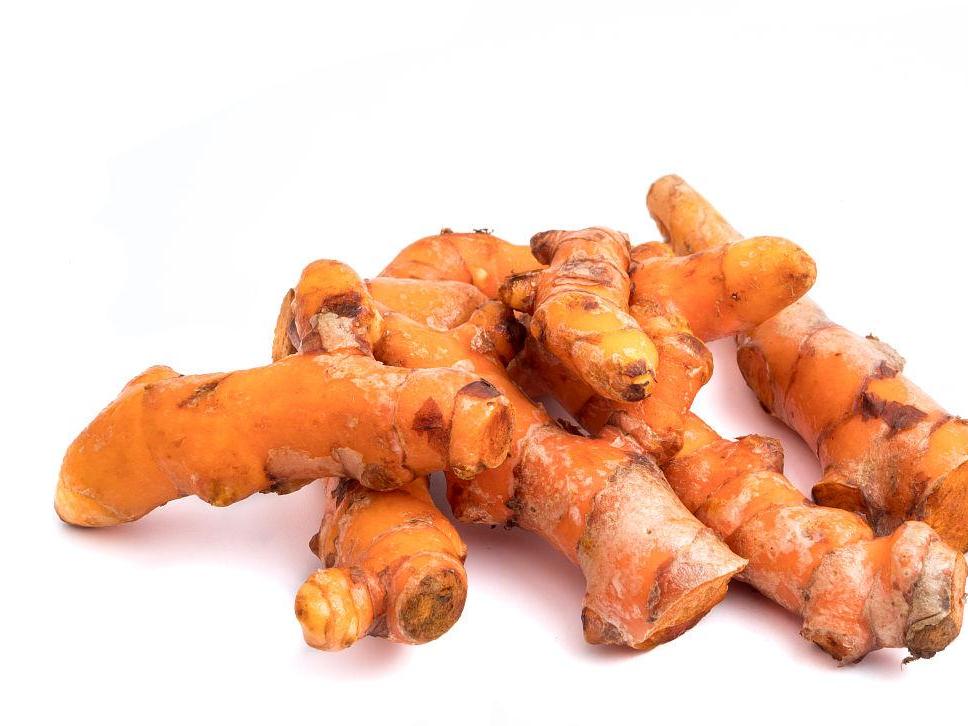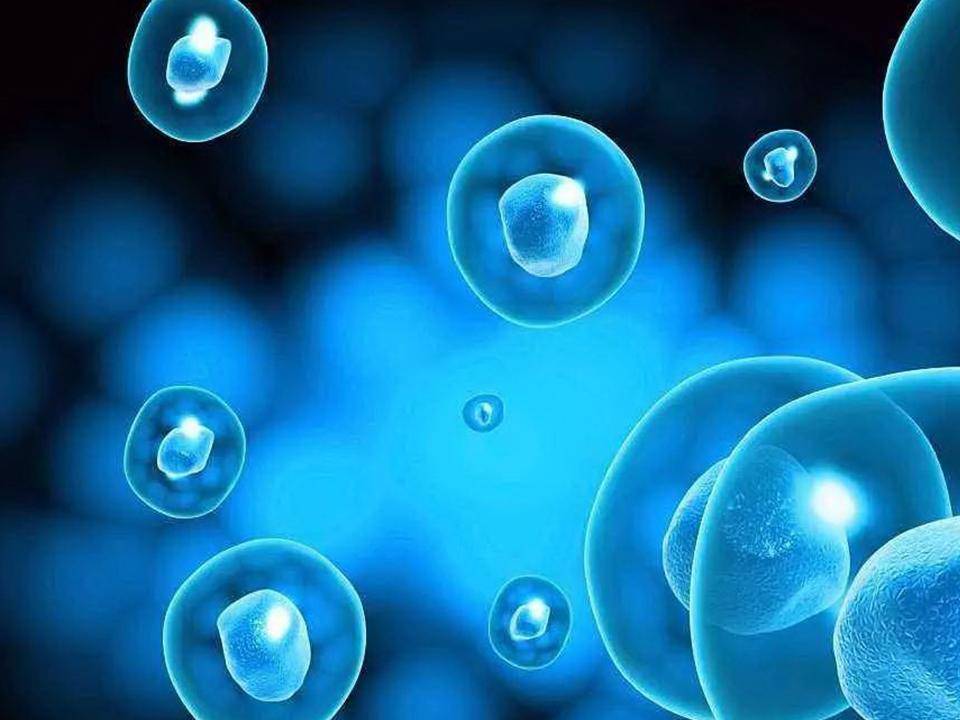What Is the Use of Beta Carotene in Pig Feeding?
The reproductive performance of sows is the core and foundation of pig farm production, and the health of sows directly determines the survival rate of newborn piglets. During pregnancy, the secretion levels of reproductive hormones highly regulate the estrus, ovulation, fertilization, pregnancy, embryonic development, parturition and lactation of sows. However, in China, the reproductive disorders of sows are caused by genetic factors, nutrition levels, feeding management, and various infectious diseases, resulting in a significant difference in the annual productivity per sow per year (PSY) and non-productive days (NPD) of sows in developed countries. In recent years, studies have found that the application of natural functional feed additives in pig farming has the effect of improving the sub-health of sows and piglets, and has achieved relatively satisfactory application feedback. The development of new natural feed additives has become an important direction for the healthy farming of livestock and poultry.
Beta-carotene is the most active provitamin A carotenoid and can be converted to vitamin A in mammals (including humans) [1], exerting biological activities such as antioxidant, immune and anti-cancer effects. At present, research on the application of β-carotene in sow production has shown that β-carotene has a varying degree of promotion in anti-inflammatory and anti-oxidative effects, maintenance of intestinal mucosal immunity, cell-to-cell communication, and lactation ability, ultimately improving the reproductive performance of sows and the resistance of newborn piglets [2-3]. This article mainly reviews the physical and chemical properties, physiological functions and application effects of β-carotene in sow reproduction, with a view to providing a reference for the better application of β-carotene in sow production.
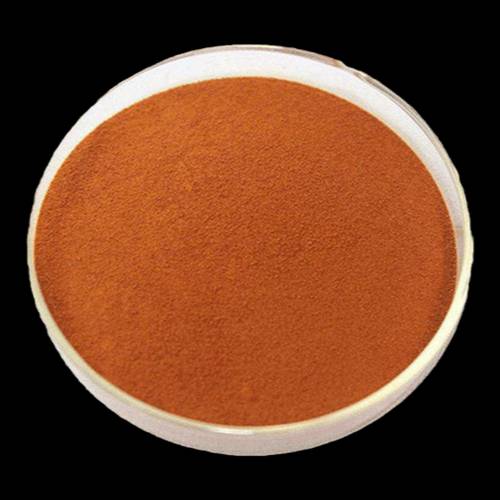
1 Physical and chemical properties of β-carotene
β-carotene is a fat-soluble, tetraterpenoid hydrocarbon with the molecular formula C40 H56 and with a relative molecular weight of 536.88. Its chemical structure is composed of four isoprene side chains, containing 15 conjugated double bonds and two β-ionone rings. It exists as a shiny reddish-purple hexahedron or crystalline powder, and is mainly a fully trans isomer. All-trans β-carotene is sensitive to light, heat and oxygen, and is prone to isomerization under high temperature and high pressure conditions, such as 9-cis, 13-cis, 15-cis and other isomers [4]; the antioxidant properties of all-trans β-carotene are superior to those of cis isomers, and cis isomers reduce the provitamin A activity of β-carotene [5-6]. Therefore, encapsulation and storage in the form of microcapsules, gels, nanoemulsions, etc., can improve the bioavailability and intestinal solubility of β-carotene in animals. In addition, the absorption rate of all-trans β-carotene is higher in monogastric animals [5].
2. Physiological functions and mechanisms of β-carotene
2.1 An important source of vitamin A
Vitamin A mainly functions in the body as its active metabolite, all-trans-retinol, which not only participates in normal bone growth and visual development, but also plays an important role in the anti-inflammatory, antioxidant and reproductive performance of the animal body. However, animals cannot synthesize vitamin A on their own. Moore [7] confirmed that β-carotene can be converted to vitamin A in animals. In food, β-carotene mainly exists in the form of a protein complex. It is separated from the protein complex by digestive enzymes, emulsified with other lipids in the duodenum by bile to form chylomicrons, and then absorbed and transported to various tissues of the body by passive diffusion. The key enzyme for cleavage in the center, β-carotene-15,15'-monoxygenase 1 (BCMO1), is expressed in epithelial cells such as the small intestine, stomach, and uterine lining. which is highly specific for the β-carotene-15,15'-double bond position, catalyzes the cleavage of 1 molecule of β-carotene into 2 molecules of vitamin A (retinal) [8].
The current consensus is that the central cleavage mechanism is the main pathway for the conversion of β-carotene to vitamin A and the eccentric cleavage pathway is the β-carotene-9', 10'-dioxygenase 2 (BCDO2) that causes the asymmetric cleavage of the β-carotene-9', 10'-double bond to form β-apo-10'-carotene aldehyde and β-ionone [9]. At the same time, the key enzyme BCMO1 for the conversion of β-carotene in the body is negatively feedback regulated by vitamin A to prevent vitamin A poisoning in the body [10]. In addition, vitamin A is one of the raw materials for synthesizing immunoglobulins, and β-carotene can provide the body with sufficient vitamin A.
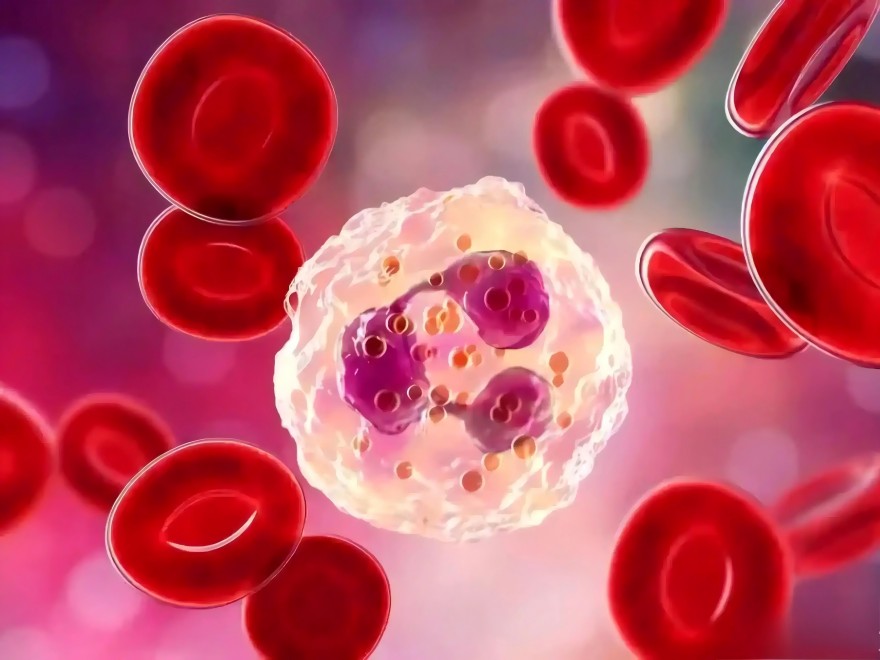
2.2 Antioxidant
Due to its own olefin structure, β-carotene can capture free radicals and quench singlet oxygen, thereby improving the body's antioxidant stress capacity [11]. It is known that 1 molecule of β-carotene can inhibit 1,000 molecules of reactive oxygen species (ROS) [12]. Hydroxyl radicals (·OH) are highly reactive free radicals that can seriously harm the body in excessive quantities. Qu Hui-ming et al. [13] and Yuan Lei et al. [14] reported that β-carotene can effectively scavenge ·OH through an addition reaction, and that the scavenging capacity follows a dose-effect relationship. The activity of antioxidant enzymes can reflect the body's ability to scavenge free radicals. Studies have shown that β-carotene can increase the activity of glutathione peroxidase (GSH-Px) in the liver and serum [15-16]. The content of malondialdehyde (MDA) can reflect the degree of lipid peroxidation damage. Shen Huiqin et al. [17] reported that β-carotene can reduce the MDA content of rat erythrocyte membranes induced by tetraoxypyrimidine, and the mechanism may be to block the chain reaction of unsaturated fatty acids on the cell membrane and free radicals.
Yang Guanming et al. [18] reported that in a model of doxorubicin-induced oxidative damage to rat myocardial tissue, beta-carotene inhibited the inducible nitric oxide synthase (iNOS) mRNA expression in myocardial tissue, thereby reducing the production of nitric oxide (NO) in myocardial tissue, and increasing the superoxide dismutase (SOD) and GSH-Px activities in myocardial tissue, thereby reducing the MDA content. In addition, Zhou et al. [19] found that in a rat model of cognitive impairment caused by chronic intermittent hypoxia, β-carotene can scavenge ROS, inhibit the expression of cysteine aspartic proteolytic enzyme 3 (caspase-3) in the hippocampus, inhibiting the phosphorylation of microtubule-associated protein, thereby reducing neuronal cell apoptosis and restoring cognitive function in rats.
Nuclear factor erythroid 2-related factor 2 (Nrf2) is an important transcription factor in the antioxidant stress response. Under normal conditions, N rf2 is present in the cytoplasm and its transcriptional activity is inhibited by Kelch-like epi- chlorohy drin related protein 1 (Keap1) [20]. Under conditions of oxidative stress, N rf2 and Keap1 rapidly dissociate and enter the nucleus to specifically bind to the antioxidant response element (antioxidant responsive element, ARE), initiating the ARE-regulated mRNA expression of antioxidant enzymes and detoxification enzyme II [21]. Zhou et al. [15] reported that in an acute spinal cord injury rat model, the addition of β-carotene can upregulate the transcriptional activity of Nrf2 and the mRNA expression of heme oxygenase (HO-1), regulate SOD activity, reduce MDA levels, and thereby reduce inflammatory mediators. Qu Huiming et al. [22] found that in a hydrogen peroxide (H2O2)-induced oxidative stress damage model in zebrafish liver, the addition of β-carotene can upregulate Nrf2 mRNA expression, which in turn upregulates the mRNA expression of antioxidant enzymes, reduces MDA content, and alleviates oxidative stress damage. It can be seen that β-carotene upregulates Nrf2 mRNA expression, increases the activity of antioxidant enzymes, and maintains the redox balance of the body.
2.3 Enhancing the body's immune system
2.3.1 Immune function
Beta-carotene can protect phagocytes from their own oxidative damage, promote the proliferation of T and B lymphocytes, stimulate the function of effector T cells, and increase the activity of CD/CD and natural killer cells (NK) [23-24]. Amar et al. [25] reported that beta-carotene can increase the total serum immunoglobulin content, serum complement activity and plasma lysozyme activity in rainbow trout. The mechanism may be that beta-carotene is liposoluble and has antioxidant properties, which allows it to enter phagocytes to scavenge free radicals on the membrane and promote T lymphocyte proliferation. Serum immunoglobulin levels can reflect humoral immune function.
Ma Shihui et al. [26] found that in a mouse immunosuppression model induced by cyclophosphamide, β-carotene can increase the serum immunoglobulin A (immunoglobulin A, IgA), immunoglobulin G (immunoglobulin G, IgG) and immunoglobulin M (immunoglobulin M, IgM) content, the mechanism may be to promote the differentiation of helper T cells, increase interleukin (interleukin, IL)-2 and IL-4 content, stimulate T cell and B cell proliferation, thereby increasing serum immunoglobulin content. Nishiyama et al. [27] supplemented the diet of pregnant and lactating rats with β-carotene and found that it could increase the number of IgA antibody-secreting cells in the mammary glands and ileums of the rats, improve the immune level of the intestinal mucosa, and enhance the vertical transmission of IgA in breast milk to newborn mice. In addition, Liu Haiyan et al. [28] found that β-carotene could significantly increase the bursa index of 21-day-old Hy-Line brown chickens and improve their immunity.
2.3.2 Anti-inflammatory function
Nuclear factor kappa B (NF-κB) is a switch that regulates many cytokines and inflammatory factors in the inflammatory response [29]. Under normal conditions, NF-κB in the cytoplasm is in a dormant state in combination with the inhibitory protein κB (IκB). When stimulated, NF-κB and IκB quickly dissociate and translocate to the nucleus, where they bind to the promoter of the target gene and induce the transcription of inflammation-related genes [30], such as IL-6, IL-8, IL-1β and tumor necrosis factor-alpha (TNF-α). Zhang Xiaoyin et al. [31] reported that In a lipopolysaccharide (LPS)-stimulated RAW264.7 macrophage stress model, β-carotene inhibited the production of ROS and the protein expression of NF-κB p65 by macrophages, thereby reducing the mRNA expression of TNF-α, IL-1β and IL-6.
Lee et al. [32] also found that in a mouse model of sepsis induced by LPS, β-carotene reduced the mRNA expression of TNF-α, iNOS, and cyclooxygenase-2 (COX-2) by blocking IκB degradation and NF-κB nuclear import. Lin et al. [33] found that β-carotene pretreatment of RAW264.7 macrophages from rats can reduce the levels of COX-2, iNOS, TNF-α, IL-1β, IL-6 and monocyte chemotactic protein produced by pseudorabies virus inflammation. The mechanism is to inhibit the phosphorylation of mitogen-activated protein kinase and the protein expression of NF-κB (p50 and p65). Yan Changmeng et al. [34] found that β-carotene pretreatment of rats with acute pancreatitis can inhibit the mRNA expression of NF-κB and IL-6, upregulate the mRNA expression of transforming growth factor-β1 (TGF-β1), and promote the recovery and regeneration of the pancreas.
As can be seen from the above, β-carotene exerts an immunomodulatory effect. On the one hand, it protects immune cells from ROS-induced damage based on its antioxidant properties, increases the activity of lymphocytes, and thus improves the ability to produce immunoglobulins; on the other hand, it reduces the transcription of pro-inflammatory factors by inhibiting the mRNA expression of NF-κB.
2.4 Maintaining intestinal health
The morphological structure and functional integrity of the intestinal mucosa determine the animal's nutrient absorption, growth and production, as well as the body's immune function. Li Ruonan et al. [35] reported that in a model of LPS-induced injury to porcine jejunal epithelial cells, β-carotene promoted the expression of occludin, claudin 4 and zonula occludens-1 (ZO-1) in intestinal epithelial cells, thereby improving the integrity of the intestinal mucosal barrier.
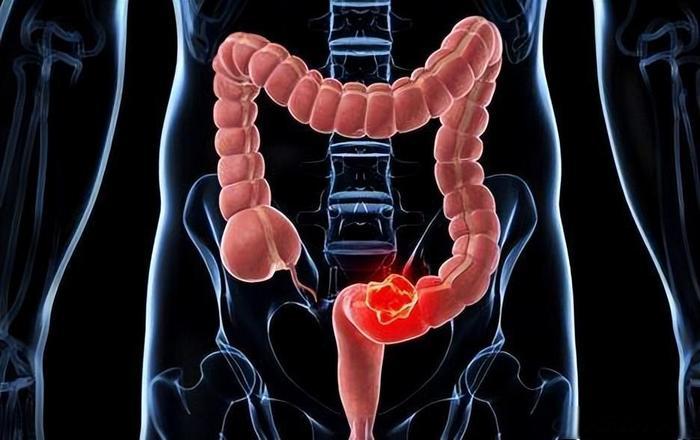
Wu Min [36] found that β-carotene can inhibit weaning-induced inflammation in the jejunum of piglets, protect the morphology of the jejunal villi, and promote the secretion of antibodies by jejunal epithelial cells. The mechanism may be that β-carotene hinders the activation of the NF-κB pathway and suppresses the mRNA expression of IL-1β, IL-6, and TNF-α. Hong Pan [37] found that oral administration of β-carotene can alleviate the inflammation of intestinal epithelial cells and the decline in immune function in piglets caused by early weaning, increase the height of intestinal villi/depth of crypts, enhance the immune function of intestinal mucosa and nutrient absorption, The mechanism may be through down-regulating the phosphorylation level of NF-κB p65 protein and inhibiting the expression of inflammatory factors. Nishida et al. [38] found that adding β-carotene can enhance the IgA content and IgA secretory cell number in the jejunum or ileum mucosa of weaned mice, enhance the immune function of the intestinal mucosa, and reduce the diarrhea rate of mice.
3 Application of β-carotene in sow production
At present, the role of vitamin A in improving animal reproductive performance has been confirmed. As an important source of vitamin A, β-carotene not only exerts the physiological functions of vitamin A, but also has good permeability, which allows it to enter follicle and corpus luteum cells to exert a unique effect, thereby improving sow fertility and piglet survival rate [39].
3.1 Effect on sow reproductive performance
The reproductive performance of sows is one of the most critical aspects of pig production. Its indicators mainly include litter size, number of live born piglets, birth weight of piglets, number of weaned piglets, weight of weaned piglets, and interval from weaning to estrus. Ge Jinshan et al. [40] added 100 mg/kg β-carotene to the sow's basal diet 14 days before mating and up to day 90 of gestation. They found that the average number of live piglets born per litter and the average birth weight increased significantly by 38.9% and 18.2%, respectively, the number of weak piglets and stillborn piglets decreased by 0.06 and 0.04 heads, respectively; adding 500 mg/kg β-carotene to the sow's basal diet from day 90 of gestation to weaning was found to significantly increase the immunoglobulin content of the sow's colostrum, and the weaning litter weight, the average number of weaned heads and the average weaning weight of piglets were significantly increased by 36.6%, 25.8% and 2.3% respectively.
Feng Jun et al. [41] added 160 mg/kg microencapsulated β-carotene to the sow diet in the late gestation period and found that the piglets' birth weight and birth weight per litter were significantly increased by 16.7% and 25.5%, but had no significant effect on the number of live born piglets. Brief et al. [42] found that after the sow was bred, if she was injected with 12,300 IU of vitamin A and 32.6 mg of β-carotene, the vitamin A and β-carotene content in the sow's serum would increase significantly, the early embryonic mortality rate would decrease significantly, and the number of live born piglets per litter, the weight of the piglets at birth, the number of live piglets weaned and the weight of the litter at weaning would increase.
Coffey et al. [43] found that a single injection of 200 mg β-carotene before and after mating on day 7 significantly increased the embryonic survival rate, litter size and piglet birth weight. Kosto g lou et al. [44] added 400 mg/d β-carotene to the sow diet from day 99 of gestation to day 30 after farrowing and found that it did not increase serum β-carotene, vitamin A or IgG levels; However, when 200 mg/head of β-carotene was injected intramuscularly into sows in four doses (100th day of pregnancy, the day of delivery, the day of weaning, and the first day of estrus), it was found to significantly reduce embryonic mortality and increase the serum β-carotene content of lactating sows, the number of live born piglets per litter, and the number of weaned piglets. Czarnecki et al. [45] added 300 mg/d β-carotene to the feed of young multiparous sows from the 100th day of gestation to the 35th day of lactation, and found that it significantly increased the number of live born piglets per litter, reduced pre-weaning piglet mortality, and shortened the interval from weaning to estrus.
3.2 Effect on the secretion of reproductive hormones in sows
The reproductive activity of sows during pregnancy is regulated by major reproductive hormones such as gonadotropin, progesterone and estrogen. Progesterone is secreted by the corpus luteum cells in the ovary and has the effect of promoting the development of the uterus and endometrial glands, which is beneficial for embryo implantation and maintaining embryonic development during pregnancy. Estradiol and oxytocin act synergistically to contract the uterine muscles rhythmically, which has the effect of improving the fertility rate, facilitating fetal delivery and stimulating lactation in the mammary glands. In addition, the uterine lining secretes a glycoprotein with acid phosphatase activity and iron-binding capacity, as well as six small acidic proteins that inhibit immunity, which play an important role in embryonic development [46-47].
Schweigert et al. [48] reported that adding β-carotene (100 mg/kg) + vitamin A (4000 IU/kg) to the feed of young sows for 14 weeks resulted in a highly significant increase in vitamin A in the uterus and β-carotene in the corpus luteum, which directly affects the secretion of ovarian steroid hormones in sows and also stimulates the secretion of progesterone by corpus luteum cells. In addition, adding β-carotene (100 mg/kg) + vitamin A (4,000 IU/kg) before ovulation and before embryo implantation in primiparous sows was found to improve the uterine environment and reduce early embryonic mortality.
Liu Ruigang et al. [49] added 160 mg/kg of microencapsulated β-carotene to the late gestation diet of sows and found that the serum estradiol and progesterone levels on day 110 of gestation were significantly increased by 37.75% and 15.59%, which may be due to the antioxidant properties of β-carotene protecting the integrity and viability of the follicular cells and endometrial steroid-producing cells of the sow. Chew et al. [50] found that intramuscular injection of 16.4 mg/d β-carotene in estrus sows can significantly improve the uterine environment of sows, increase the secretion levels of follicle-stimulating hormone and luteinizing hormone, and increase the secretion of uterine-specific proteins, thereby reducing early embryonic mortality. In addition, Talavera et al. [51] reported that in vitro culture of pre-estrus porcine luteal cells, the addition of vitamin A derivatives (retinol and retinoic acid) and β-carotene to the culture medium can significantly increase progesterone secretion levels, and the effect of β-carotene is better than that of retinol and retinoic acid. The reason may be that β-carotene is more effective in increasing the release of luteinizing hormone.
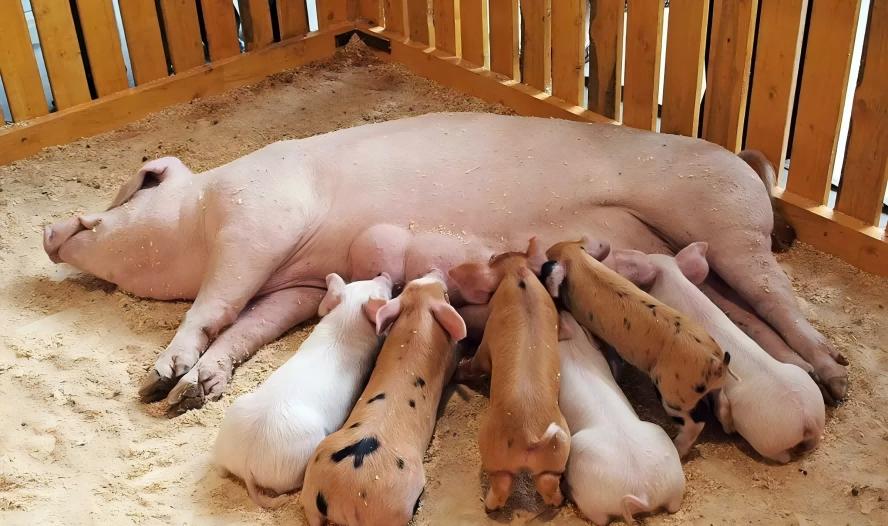
3.3 Effect on the immune function of sows
From the estrus period to the gestation period, the energy and oxygen requirements of sows gradually increase. Excessive ROS produced by their own metabolism and placental growth induces oxidative stress and inflammation in the body, which in turn affects the sow's estrus, ovulation, fertilization, embryo implantation, pregnancy, childbirth, and lactation abilities [2, 52]. In addition, newborn piglets obtain passive immunity through the sow's colostrum, which contains immunoglobulins, beneficial microorganisms and nutrients. Brief et al. [42] found that injecting each gilt with 12,300 IU of vitamin A and 32.6 mg of β-carotene significantly increased serum immunoglobulin levels and colostrum IgG levels, thereby improving the immune capacity of sows and piglets.
Feng Jun et al. [41] added 160 mg/kg of microencapsulated β-carotene to the sow diet on days 95 and 110 of gestation, and found that the IgG content of the sow's colostrum increased significantly by 73.3%, and the serum IgA, IgM and IgG content and total antioxidant capacity increased significantly, thereby improving the sow's immune capacity and the health of the piglets at birth. Li Yanqiang [53] added 200 mg/kg β-carotene to the gestating sow's diet half a month and one month before farrowing. It was found that the IgA content in the sow's feces, blood and colostrum was significantly increased. While improving the immune function of the intestinal mucosa itself, it also enhanced the vertical transfer of immunoglobulins, nutrients and beneficial intestinal microorganisms from breast milk to suckling piglets, and improve the mucosal immune function of newborn piglets. Chew et al. [54] found that after intramuscular injection of 10, 20 and 40 mg β-carotene into sows, the β-carotene content in the lymphocytes of sows injected with 40 mg β-carotene increased significantly 3 h later, and reached a maximum value at 12 h, promoting the proliferation and differentiation of lymphocytes.
The above studies suggest that the possible mechanism by which β-carotene improves the reproductive performance of sows is as follows: 1) β-carotene, as a vitamin antioxidant or local vitamin A precursor, protects uterine and ovarian cells from ROS damage, thereby improving the uterine environment, which is conducive to improving the function of ovarian cells in producing steroid hormones and promoting the process of embryo implantation, growth and development process; 2) β-carotene is stored in the corpus luteum, where it can form an indispensable component of the corpus luteum cell membrane and organelles, promote the secretion of progesterone by corpus luteum cells, help maintain pregnancy and embryo implantation, and reduce embryo mortality; 3) β-carotene improves the sow's anti-inflammatory and antioxidant capacity, maintains the immune function of the intestinal mucosa and lactation capacity, and improves the transfer of immunoglobulins from sow colostrum to piglets, thereby increasing piglet survival rate; 4) β-carotene is converted into vitamin A in the body, maintaining the functional integrity of uterine epithelial cells, allowing the secretion of uterine-specific proteins to reach an optimal level, improving early embryonic survival rate, and providing nutrients and immune protection for embryonic development. In addition, studies have shown that β-carotene can improve the semen quality of boars and promote the maturation of sperm in the epididymis to increase the fertility rate of sows.
4 Summary
In summary, β-carotene, as a pure natural green additive, can improve the uterine environment of sows, regulate the synthesis and secretion of reproductive hormones and specific proteins in sows, improve the sow's reproductive performance by enhancing the immune function of the intestinal mucosa and lactation ability, and the sow then vertically transfers nutrients, immunologically active substances and beneficial intestinal microorganisms to the newborn piglets through colostrum to improve the piglets' survival rate. At present, there is an increasing amount of research, both domestic and international, on how β-carotene can improve the reproductive performance of female livestock, and it has achieved relatively satisfactory application results. However, there are different research results on the appropriate addition level, addition method and duration of β-carotene in different physiological stages of sows. Further in-depth discussion and research is urgently needed to provide theoretical reference for the application of β-carotene in sow production and reproduction, in line with the new era and new model of farming trends.
Referenece:
[1] Li Chao, Jia Bingyu, Gao Min, et al. Biological effects and mechanisms of β-carotene [J]. Journal of Animal Nutrition, 2018, 30 (8): 2931-2937.
[2] ZHAO Y,FLOWERS W L,SARAIVA A,et al.Effect of social ranks and gestation housing systems on oxidative stress status,reproductive performance,and immune status of sows[J].Journal of Animal Science, 2013,91 ( 12) : 5848-5858.
[3] Cai Xiaozhan and He Yinfen. Research progress of β-carotene [J]. Journal of Agricultural Products Processing, 2005(8): 27-30.
[4] SANCHEZ C,BARANDA A B,DE M ARAN6N I M ,et al.The effect of high pressure and high tempera- ture processing on carotenoids and chlorophylls con- tent in some vegetables[J].Food Chemistry,2014, 163 : 37-45.
[5 ] KHOO H E,PRASAD K N,KONG K W,et al.Carot- enoids and their isomers : color pigments in fruits and vegetables[J].Molecules,2011,16(2) : 1710-1738.
[6 ] MUELLER L,BOEHM V.Antioxidant activity of β - carotene compounds in different in vitro assays[J]. Molecules,2011,16(2) : 1055-1069.
[7 ] MOORE T.Vitamin A and carotene : the absence of the liver oil vitamin A from carotene. Ⅵ. The conversion of carotene to vitamin A in vivo[J].Biochemical Jour- nal,1930,24( 3) : 692-702.
[8 ] WEBER D,GRUNE T.The contribution of β-carotene to vitamin A supply of humans[J].Molecular Nutri- tion and Food Research,2012,56(2) : 251-258.
[9 ] WANG X D,KRINSKY N I.The bioconversion of β -carotene into retinoids[M]/ / QUINN P J,KAGAN V E.Subcellular biochemistry.Boston,MA : Springer, 1998,30 : 159-180.
[10] SEINO Y,MIK I T,KIYONARI H,et al.Isx partici- pates in the maintenance of vitamin A metabolism by regulation of β-carotene15,15' -monooxygenase ( BC- MO1) expression[J].Journal of Biological Chemistry,2008,283 ( 8) : 4905-4911.
[11] AKCAKAYA H,TOK S,DAL F,et al. β-carotene treatment alters the cellular death process in oxidative stress-induced K562 cells[J].Cell Biology Interna- tional,2017,41 ( 3) : 309-319.
[12] Fan Xiaolan, Yang Jun, Mi Mantian, et al. Antioxidant effect and disease prevention of β-carotene [J]. Chinese Journal of Public Health, 2003, 19 (4): 479-480.
[13] Qu Huiming, Wang Ying, Chu Jie, et al. Research on the antioxidant effect of β-carotene [J]. Feed Industry, 2018, 39(2) : 9-14.
[14] Yuan Lei, Liu Xiaogeng, Tang Yu. Comparison of the free radical scavenging abilities of different carotenoids [J]. Packaging and Food Machinery, 2015, 33 (2) : 7-11.
[15] ZHOU L H,OUYANG L,LIN S Z,et al.Protective role of β-carotene against oxidative stress and neuroin- flammation in arat model of spinal cord injury[J].In- ternational Immunopharmacology,2018,61 : 92-99.
[16] HOSSEIN I F,NASERI M K G,BADAVI M ,et al. Effect of beta carotene on lipid peroxidation and antioxidant status following renal ischemia / reperfusion injury in rat[J].Scandinavian Journal of Clinical and Laboratory Investigation,2010,70(4) : 259-263.
[17] Shen Huiqin, Gao Ying. The effect of β-carotene on the structural stability of rat erythrocyte membranes [J]. Acta Nutrition, 2001, 23 (4): 306-308.
[18] Yang Guanming, Sun Shengtao, Li Shuquan, et al. Effect of β-carotene on the changes in superoxide dismutase and glutathione peroxidase mRNA expression in myocardial tissue of rats caused by adriamycin [J]. Chinese Journal of Pharmacology, 2006, 22(4): 465-470.
[19] Zhou T, Liu H, Xu P, et al. Effects of β-carotene on learning and memory and the expression of caspase-3 and phosphorylated tau in the hippocampus of rats with obstructive sleep apnea syndrome [J]. Journal of Clinical Neurology, 2019, 32(01): 50-53.
[20] TAGUCHI K,FUJIKAWA N,KOMATSU M ,et al. Keap1 degradation by autophagy for the maintenance of redox homeostasis[J].Proceedings of the National Academy of Science of the United States of America, 2012,109( 34) : 13561-13566.
[21] YAMAMOTO M ,KENSLER T W,MOTOHASHI H. The KEAP1-NRF2 system : α thiol-based sensor-effec- tor apparatus for maintaining redox homeostasis[J]. Physiological Reviews,2018,98( 3) : 1169-1203.
[22] Qu Weiming, Wang Ying, Zhao Bo, et al. Protective effect of β-carotene on H2O2-induced liver damage in zebrafish [J]. Food Science, 2019, 40 (5): 162-166.
[23] CHEW B P,PARK J S.Carotenoid action on the im - mune response[J].The Journal of Nutrition,2004,134 ( 1) : 257S-261S .
[24] BENDICH A . β-carotene and the immune response [J].Proceedings of the Nutrition Society,1991,50 (2) : 263-274.
[25] AMAR E C,KIRON V,SATOH S,et al.Enhancement of innate immunity in rainbow trout ( Oncorhynchus mykiss Walbaum ) associated with dietary intake of ca- rotenoids from natural products[J].Fish & Shellfish Immunology,2004,16(4) : 527-537.
[26] Ma Sihui, Yang Hong, Wu Tiancheng, et al. Effect of β-carotene on immune indicators in immunosuppressed mice [J]. Chinese Journal of Veterinary Medicine, 2014, 48 (7): 10-14.
[27] NISHIYAMA Y,SUGIMOTO M ,IKEDA S,et al. Supplemental β-carotene increases IgA-secreting cells in mammary gland and IgA transfer from milk to neo- natal mice[J].British Journal of Nutrition,2011,105 ( 1) : 24-30.
[28] Liu Haiyan, Ji Yubin, Wang Yulin, et al. Effect of β-carotene supplementation in the diet on the growth performance and immune organs of Hy-Line brown chicks [J]. Heilongjiang Animal Husbandry and Veterinary Medicine, 2016(12): 75-77.
[29] SNYDER M ,HUANG J Y,HUANG X Y,et al.A signal transducer and activator of transcription 3 · nuclear factor κB ( Stat3 · NFκB) complex is necessary for the expression of fascin in metastatic breast cancer cells in response to interleukin ( IL) -6 and tumor nec- rosis factor (TNF) -α[J].Journal of Biological Chem - istry,2014,289(43) : 30082-30089.
[30] WAN F Y,LENARDO M J.The nuclear signaling of NF-κB : current knowledge,new insights,and future perspectives[J].Cell Research,2010,20( 1) : 24-33.
[31]Zhang Xiaoyin, Wu Min, Zhang Shanshan, et al. The effect of different ways of adding β-carotene on inflammation of RAW264.7 cells stimulated by lipopolysaccharide [J]. Journal of China Agricultural University, 2017, 22(11): 114-120.
[32] LEE S J,BAI S K,LEE K S,et al.Astaxanthin inhibits nitric oxide production and inflammatory gene ex- pression by suppressing I ( kappa) B kinase-dependent NF-kappa B activation[J].Molecules and Cells, 2003,16( 1) : 97-105.
[33] LIN H W,CHANG T J,YANG D J,et al. Regulation of virus-induced inflammatory response by β-carotene in RAW264.7 cells[J].Food Chemistry,2012,134 (4) : 2169-2175.
[34] Yan Changmeng, Tian Hua, Huo Mingxia, et al. Effect of β-carotene on the expression of NF-κB, TGF-β1 and IL-6 in rats with acute pancreatitis [J]. Jiangsu Medicine, 2018, 44(4): 357-360.
[35] Li Ruonan, Hong Pan, Lang Wuying, et al. Effect of β-carotene on the expression of tight junction proteins in IPEC-J2 cells stimulated by lipopolysaccharide [J]. Chinese Journal of Immunology, 2017, 33 (11): 1611-1615.
[36] Wu M. The protective effect and mechanism of β-carotene on lipopolysaccharide-induced inflammation in IPEC-J2 cells [D]. Doctoral dissertation. Changchun: Jilin Agricultural University, 2016.
[37] Hong P. The effect of β-carotene on endoplasmic reticulum stress and its signaling pathway in the intestine of early weaned piglets [D]. Doctoral dissertation. Changchun: Jilin Agricultural University, 2018.
[38] NISHIDA K,SUGIMOTO M ,IKEDA S,et al.Effects of supplemental β-carotene on mucosal IgA induction in the jejunum and ileum of mice after weaning[J]. British Journal of Nutrition,2015,111 (2) : 247-253.
[39] Su Congcheng. The effect of vitamins on the reproductive performance of livestock [J]. Feed Research, 2010(5): 40-42.
[40] Ge Jinshan, Zhu Yuanzhao, Dai Sifa, et al. The effect of β-carotene on the reproductive performance of sows [J]. Shandong Animal Husbandry and Veterinary Medicine, 2011, 32(7): 12-14.
[41] Feng Jun, Deng Feiyue, Yu Yanling, et al. Effects of microencapsulated β-carotene on reproduction, immunity and antioxidant function in pregnant sows [J]. Journal of Zhejiang University (Agriculture and Life Sciences), 2009, 35 (6): 665-669.
[42] BRIEF S,CHEW B P.Effects of vitamin A and β-car- otene on reproductive performance in gilts[J].Journal of Animal Science,1985,60(4) : 998-1004.
[43] COFFEY M T,BRITT J H.Enhancement of sow re- productive performance by β-carotene or vitamin A [J].Journal of Animal Science,1993,71 ( 5) : 1198 -1202.
[44] KOSTOGLOU P,KYRIAKIS S C,PAPASTERIADIS A,et al.Effect of β-carotene on health status and per- formance of sows and their litters[J].Journal of Ani- mal Physiology and Animal Nutrition,2010,83 ( 3) : 150-157.
[45] CZARNECKI R , IWANSKA S,FALKOWSKA A,et al.Effects of beta carotene-containing caromix on re- productive performance of primiparous sows [J]. World Review of Animal Production,1992,27 ( 3 ) : 27-30.
[46] BAZER F W.Uterine protein secretions : relationship to development of the conceptus[J].Journal of Animal Science,1975,41 (5) : 1376-1382.
[47] SCHLOSNAGLE D C,BAZER F W,TSIBRIS J C,et al.An iron-containing phosphatase induced by proges- terone in the uterine fluids of pigs[J].Journal of Bio- logical Chemistry,1974,249(23) : 7574-7579.
[48] SCHWEIGERT F J,BUCHHOLZ I,SCHUHMACH- ER A,et al.Effect of dietary beta-carotene on the accumulation of beta-carotene and vitamin A in plasma and tissues of gilts[J]. Reproduction Nutrition Devel- opment,2001,41 ( 1) : 47-55.
[49] Liu Ruigang, Xiao Yingping, Yu Yanling, et al. Research on the production process of microencapsulated β-carotene and its effect on steroid hormones in pregnant sows [J]. Chinese Journal of Animal Science, 2013, 49(17): 48-52.
[50] CHEW B P,RASMUSSEN H,PUBOLS M ,et al. Effects of vitamin A and β-carotene on plasma proges- terone and uterine protein secretions in gilts[J].Ther- iogenology,1982,18(6) : 643-654.
[51] TALAVERA F,CHEW B P.Comparative role of reti- nol,retinoic acid and β-carotene on progesterone se- cretion by pig corpus luteum in vitro[J].Journal of Reproduction and Fertility,1988,82(2) : 611-615.
[52] RAO P S,KALVA S,YERRAMILLI A,et al.Free radicals and tissue damage : role of antioxidants[J]. Free Radicals and Antioxidants,2011,1 (4) : 2-7.
[53] Li YQ. Analysis of the metabolism of β-carotene in pigs and its effect on the growth performance of piglets [D]. Master's thesis. Changchun: Jilin Agricultural University, 2015.
[54] CHEW B P,WONG T S,MICHAL J J,et al.Kinetic characteristics of β-carotene uptake after an injection of β-carotene in pigs[J].Journal of Animal Science, 1991,69( 12) : 4883-4891.


 English
English French
French Spanish
Spanish Russian
Russian Korean
Korean Japanese
Japanese